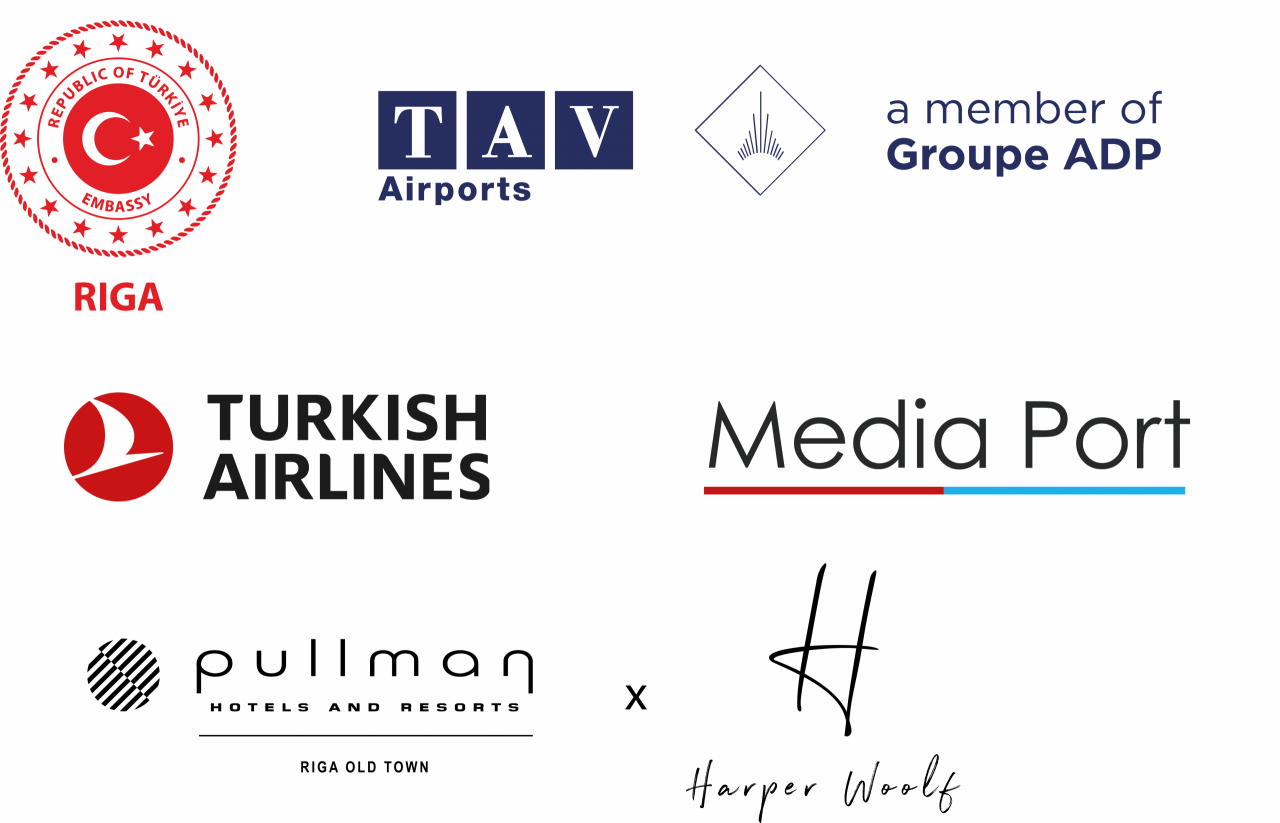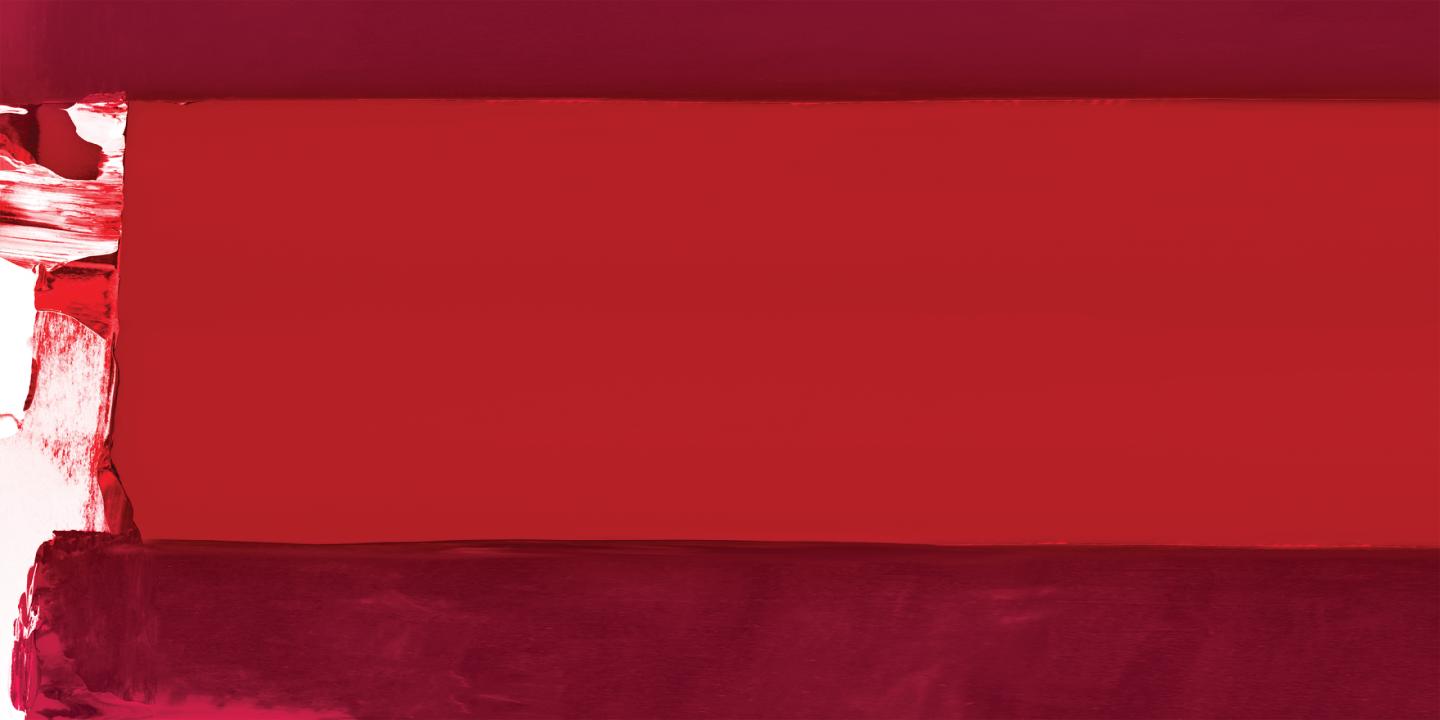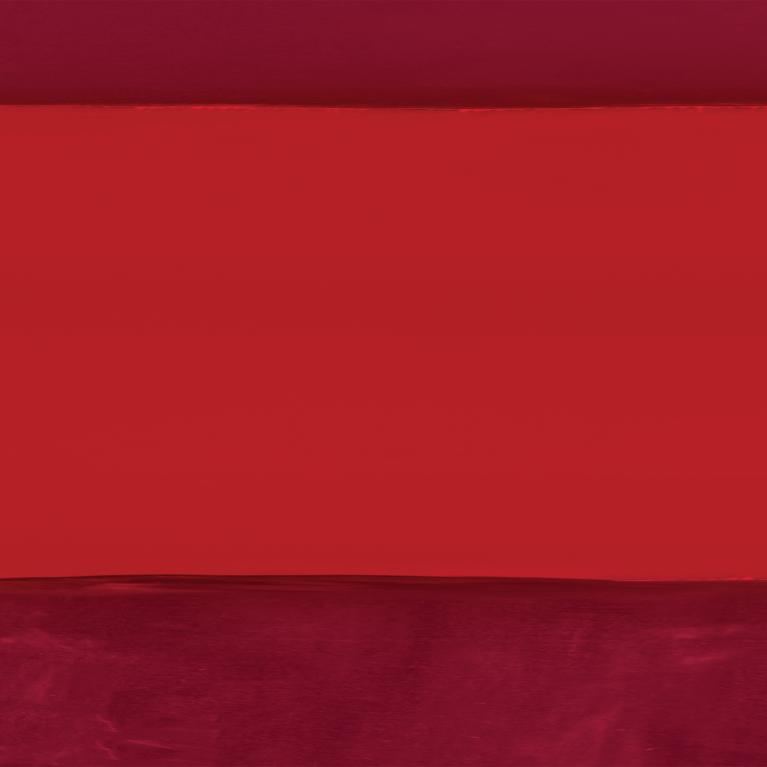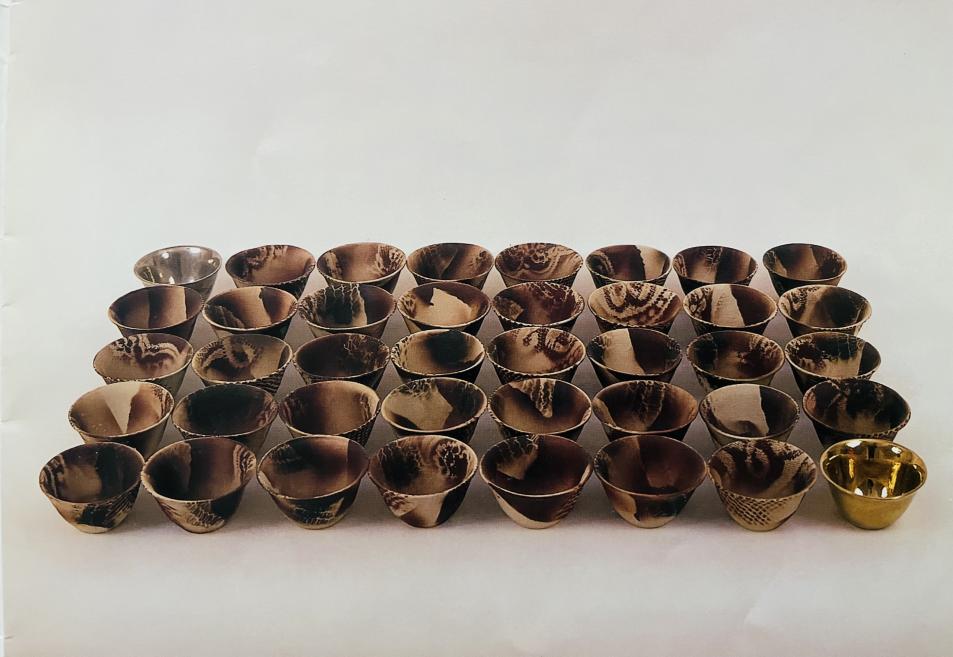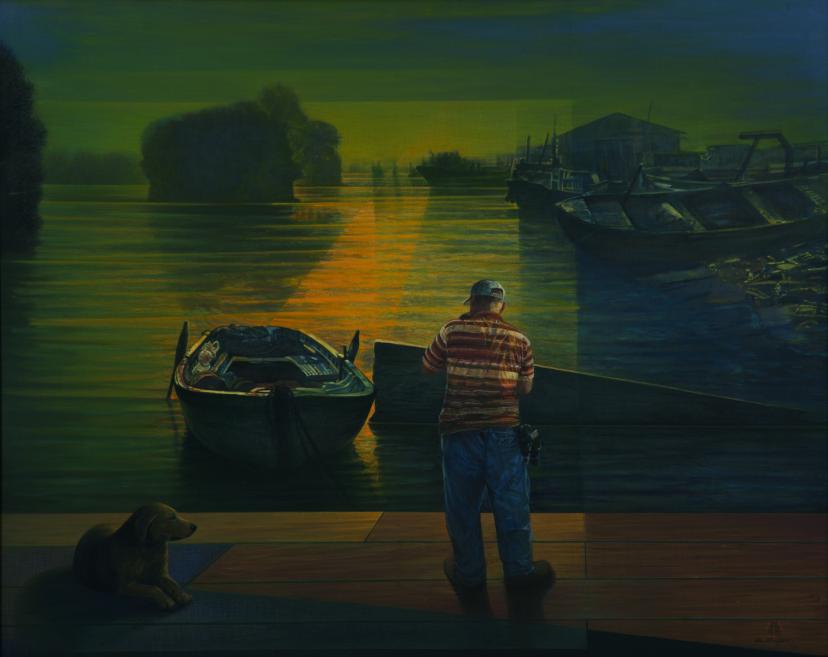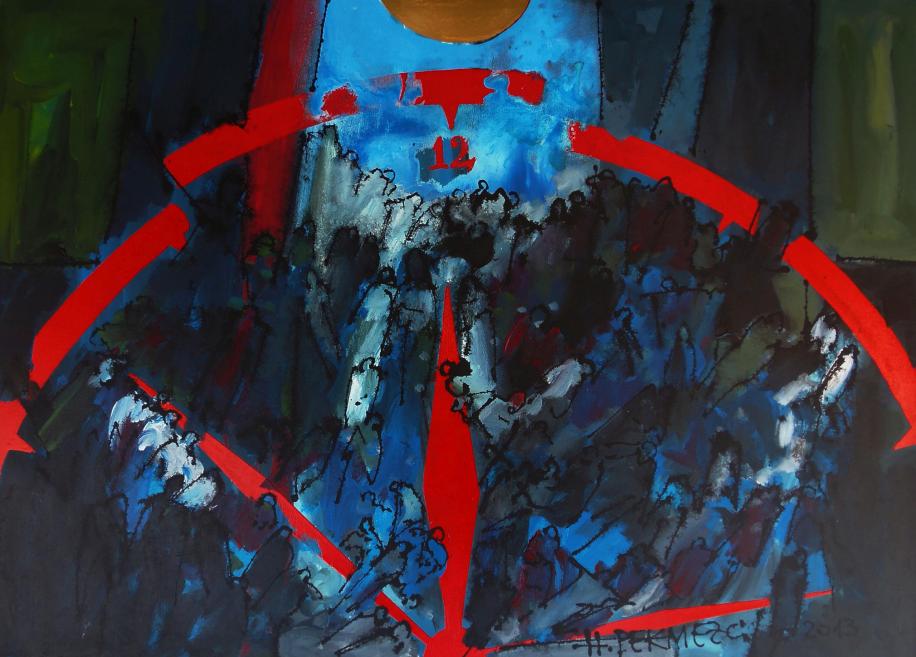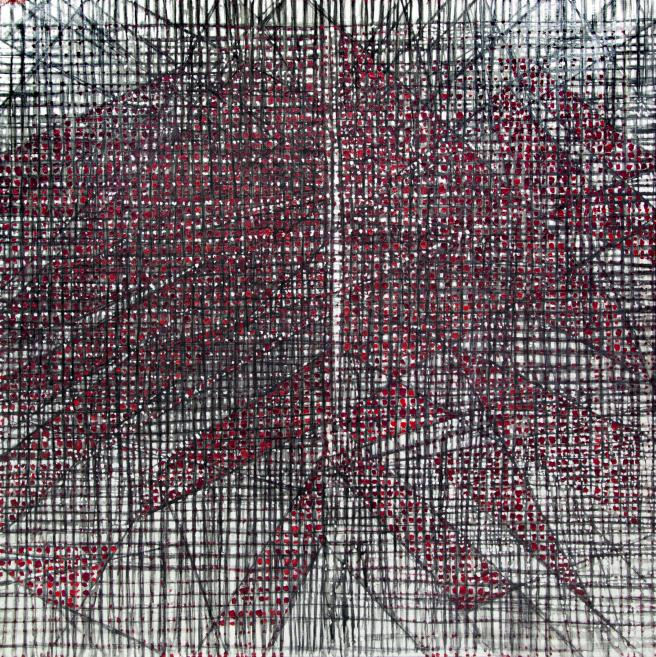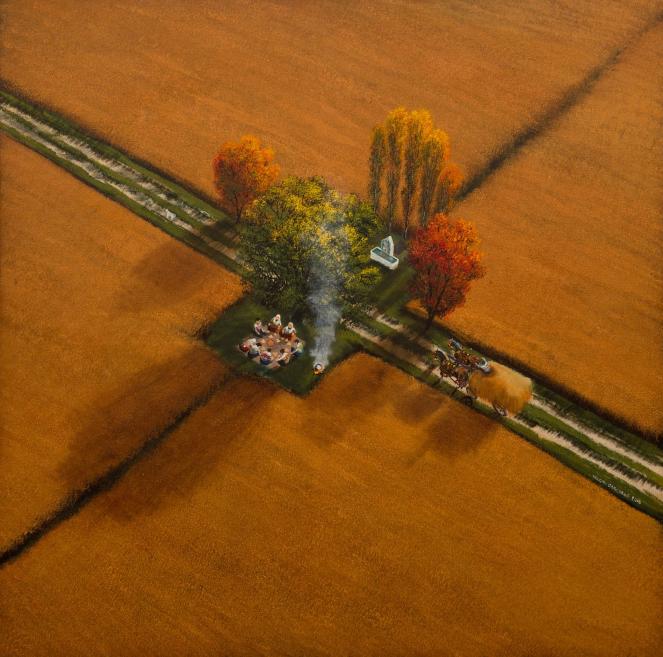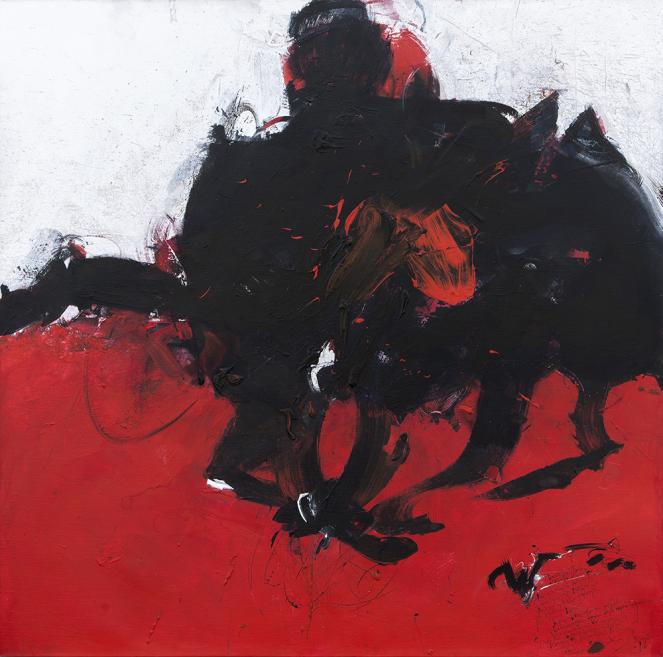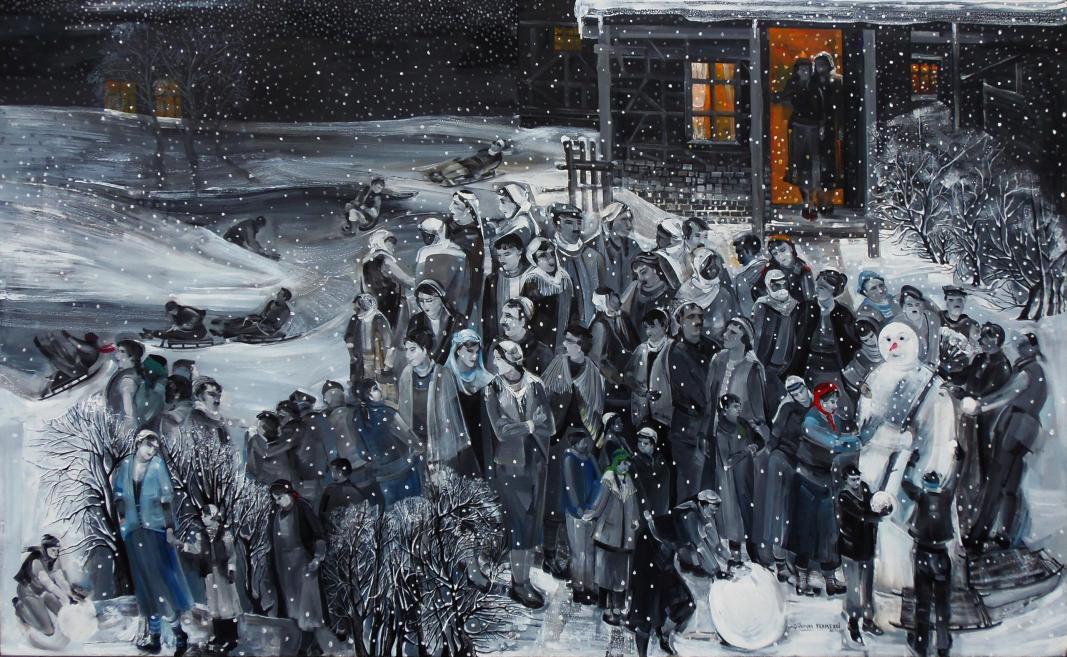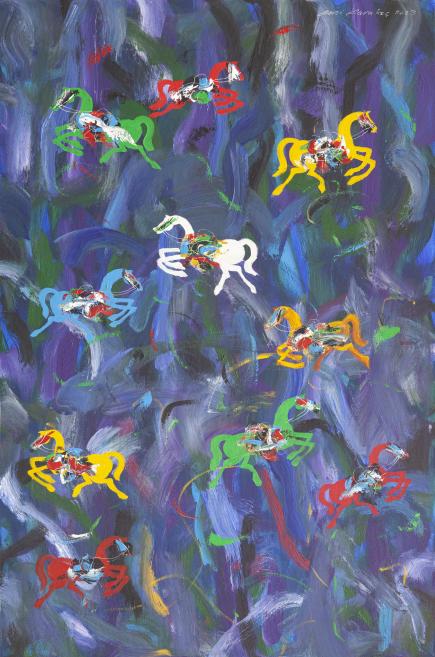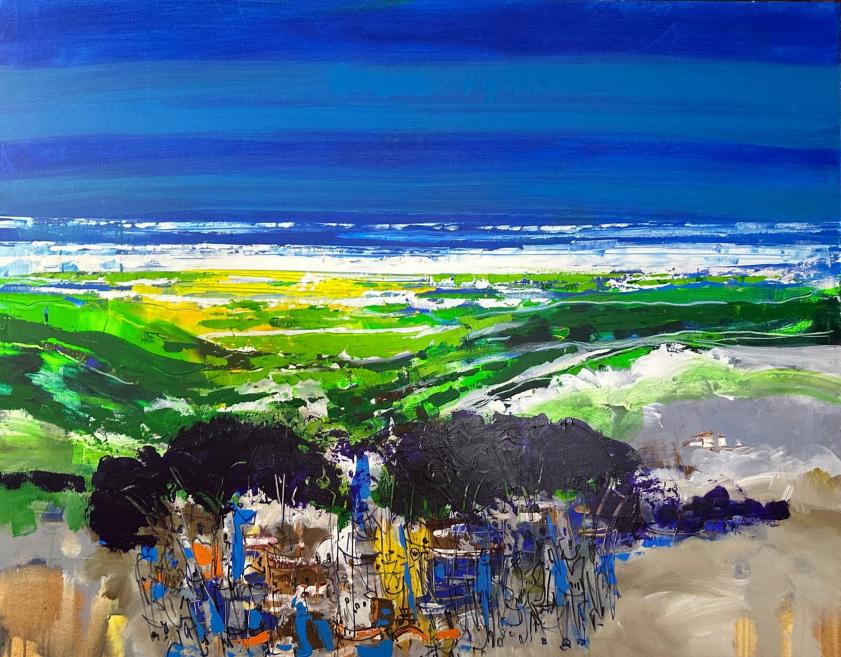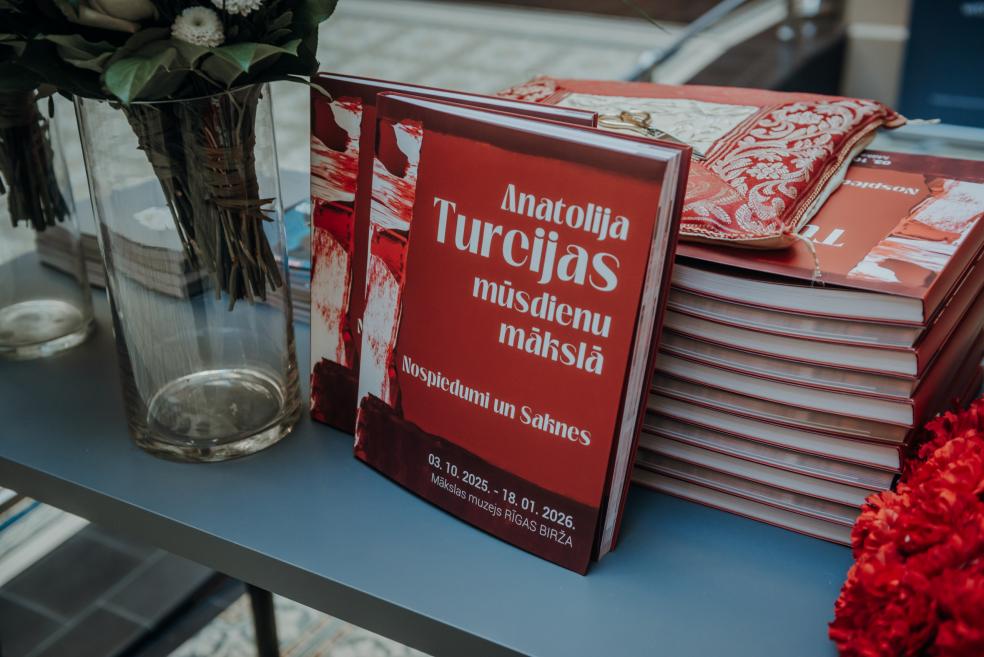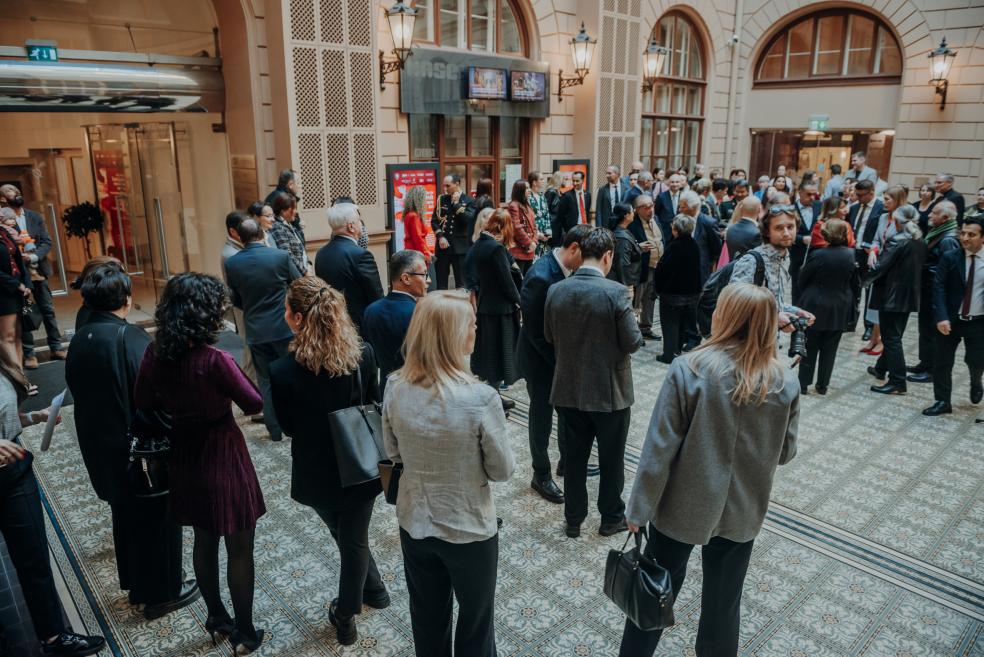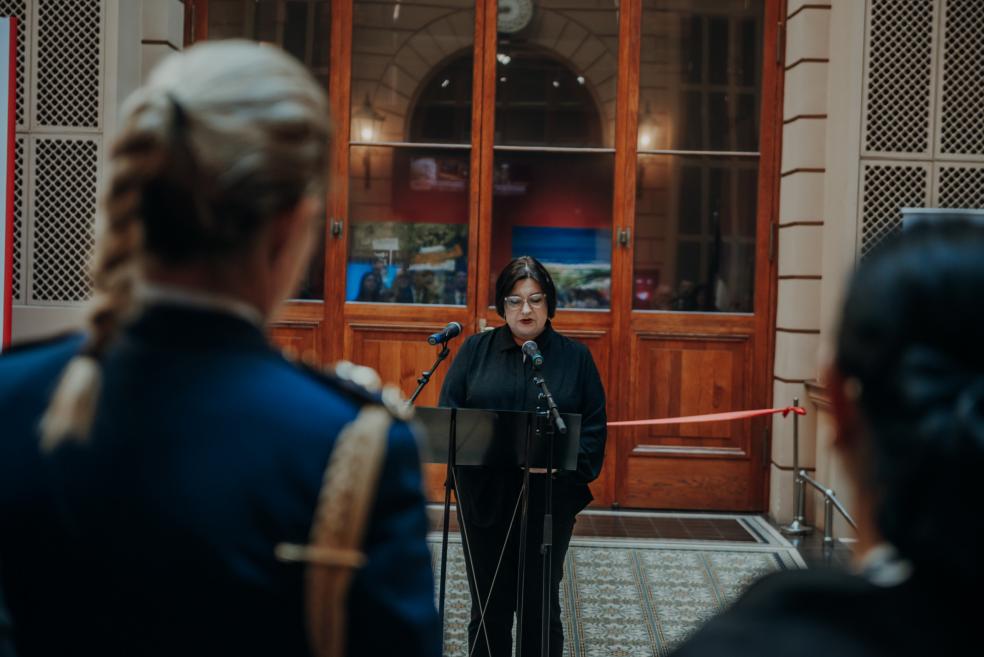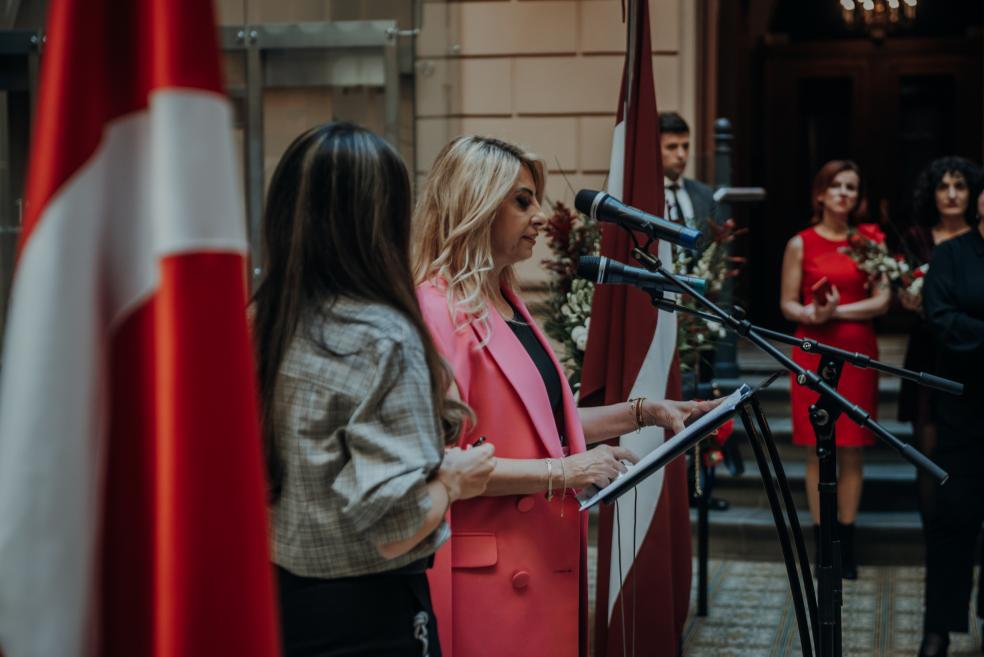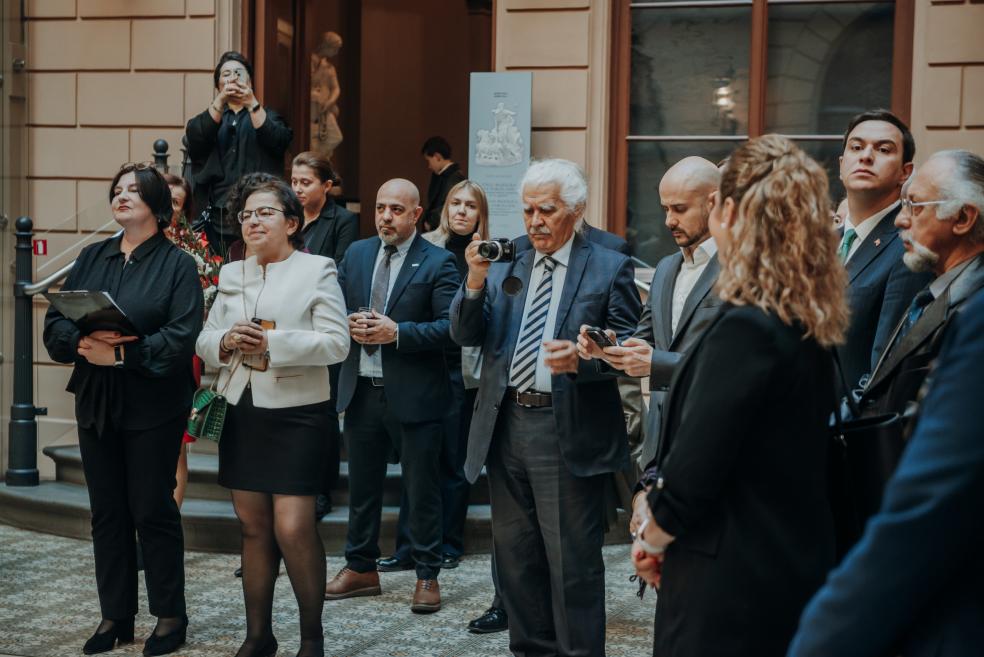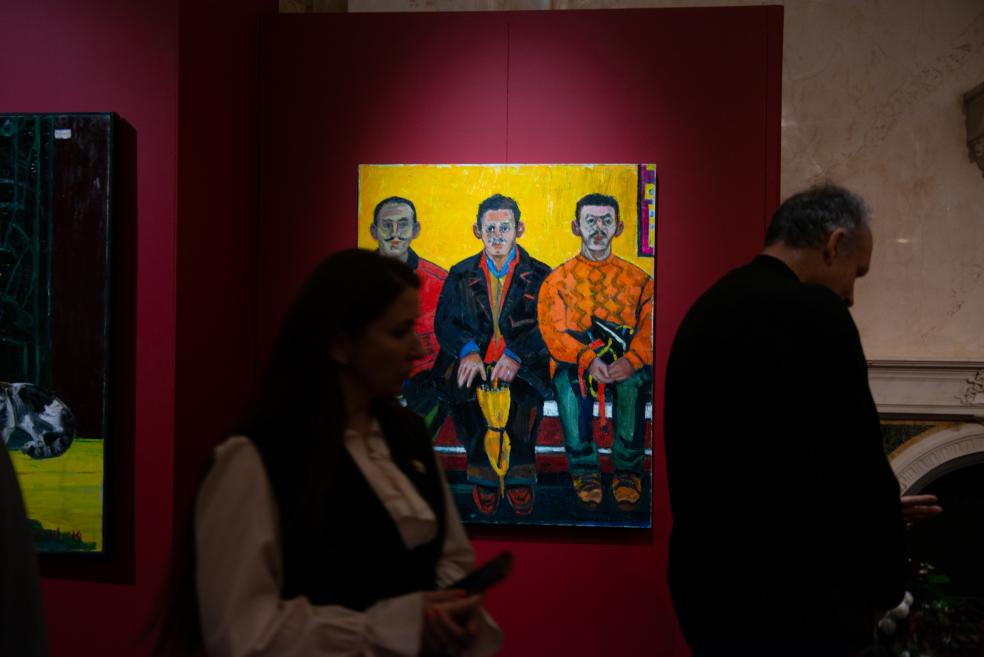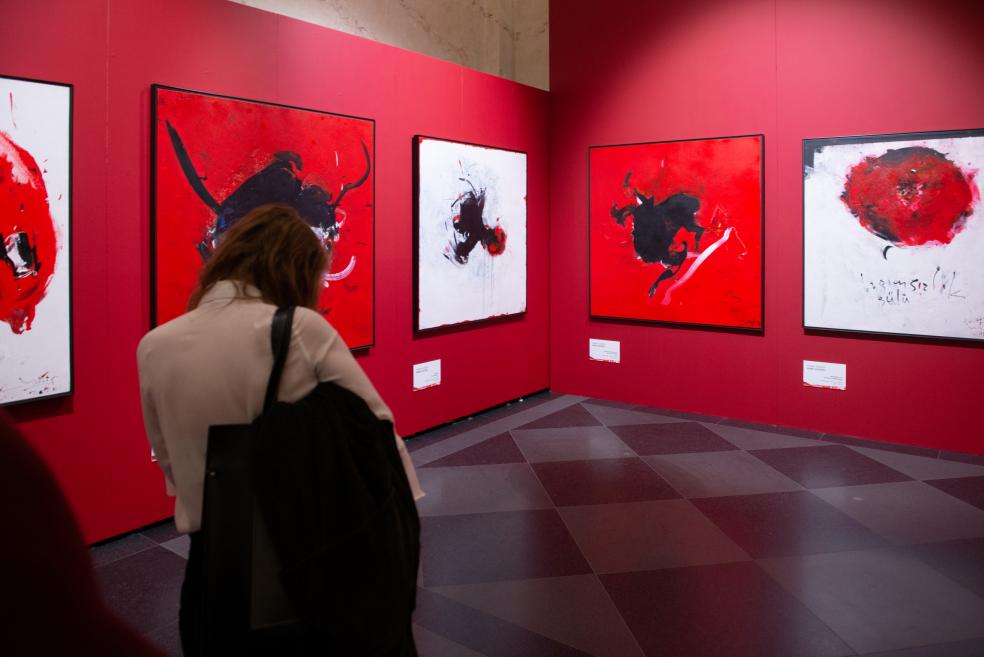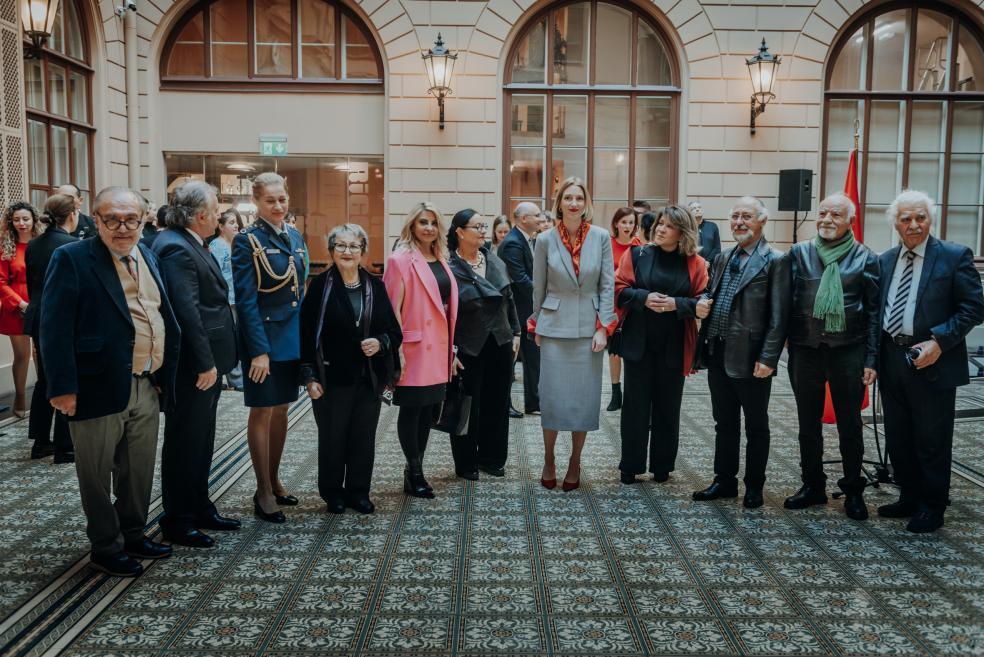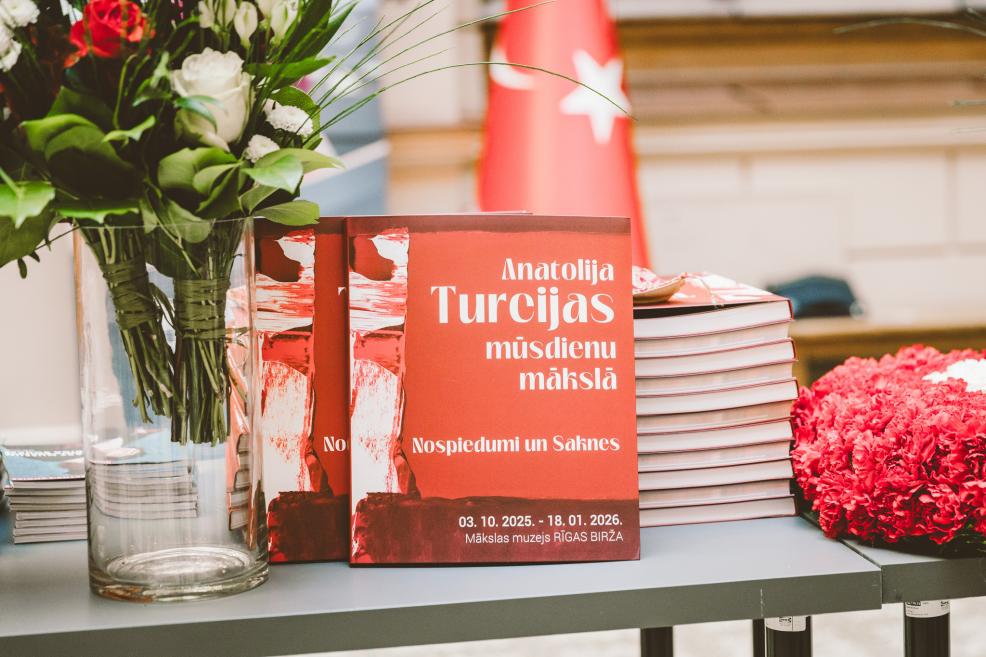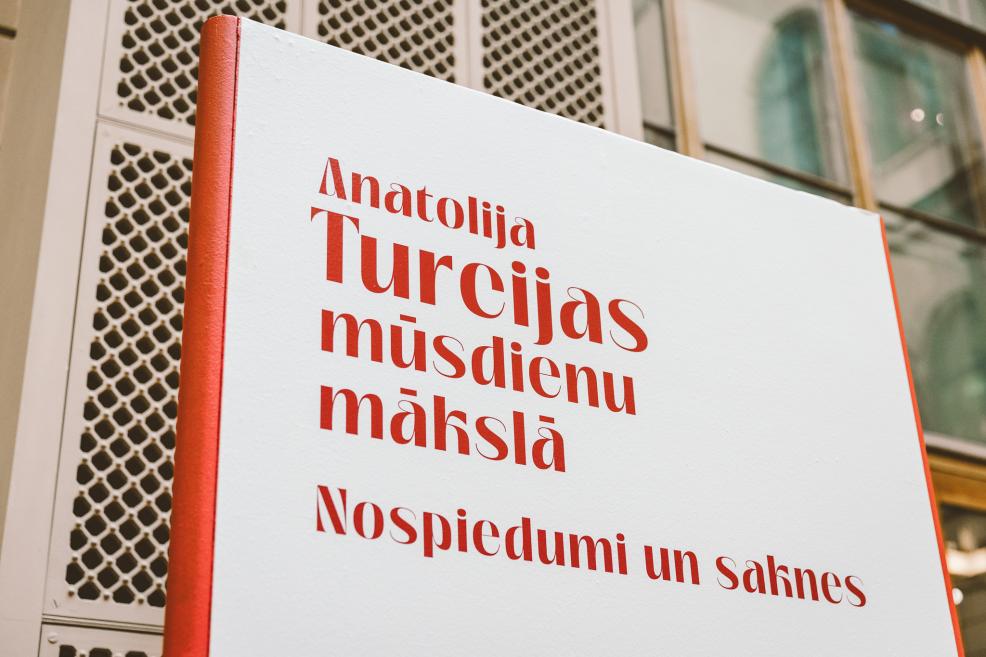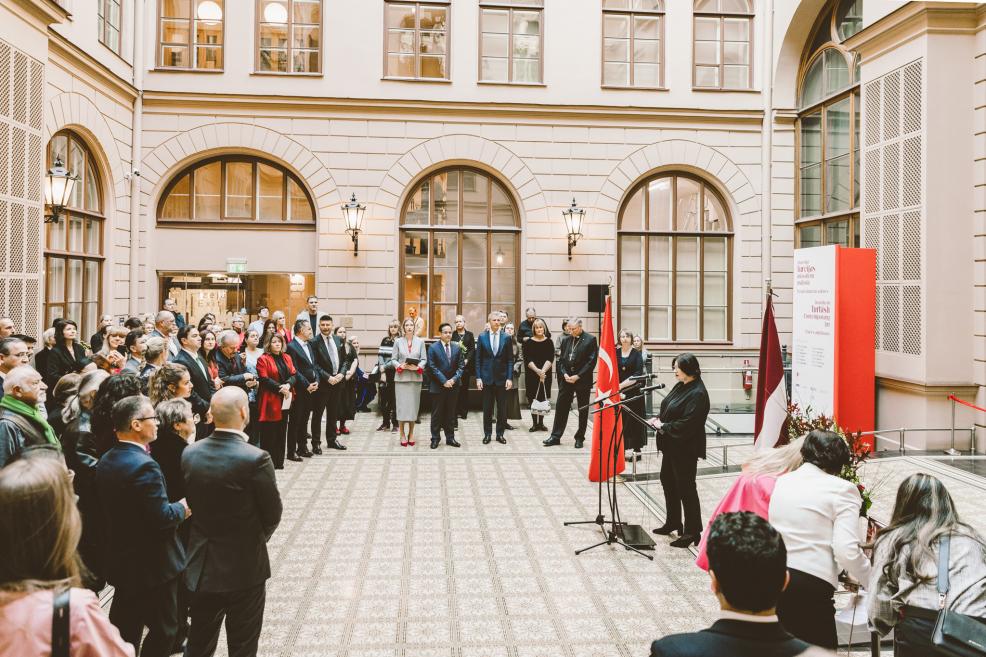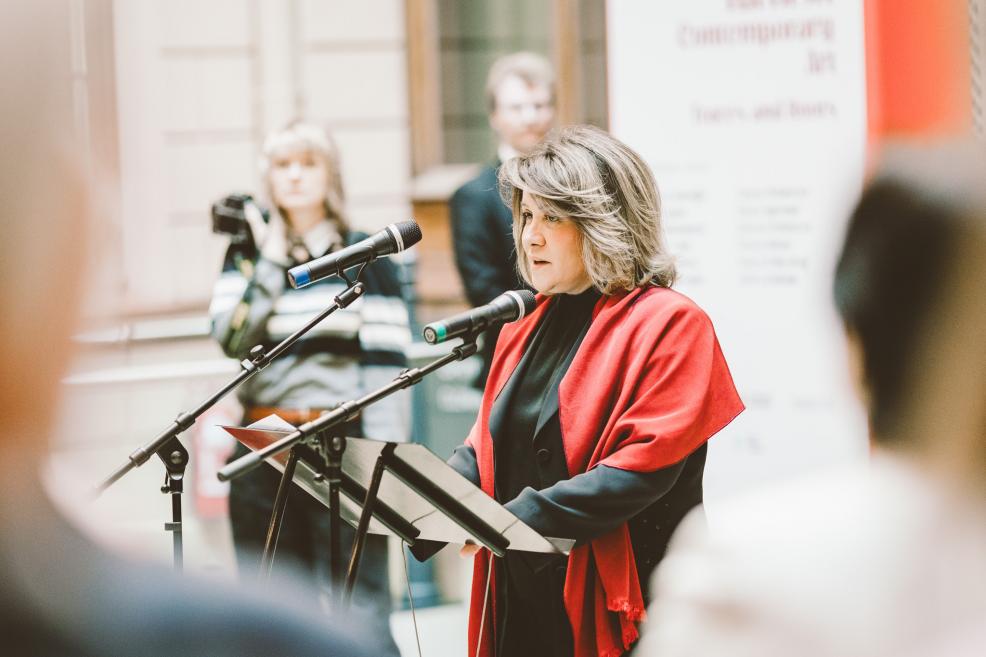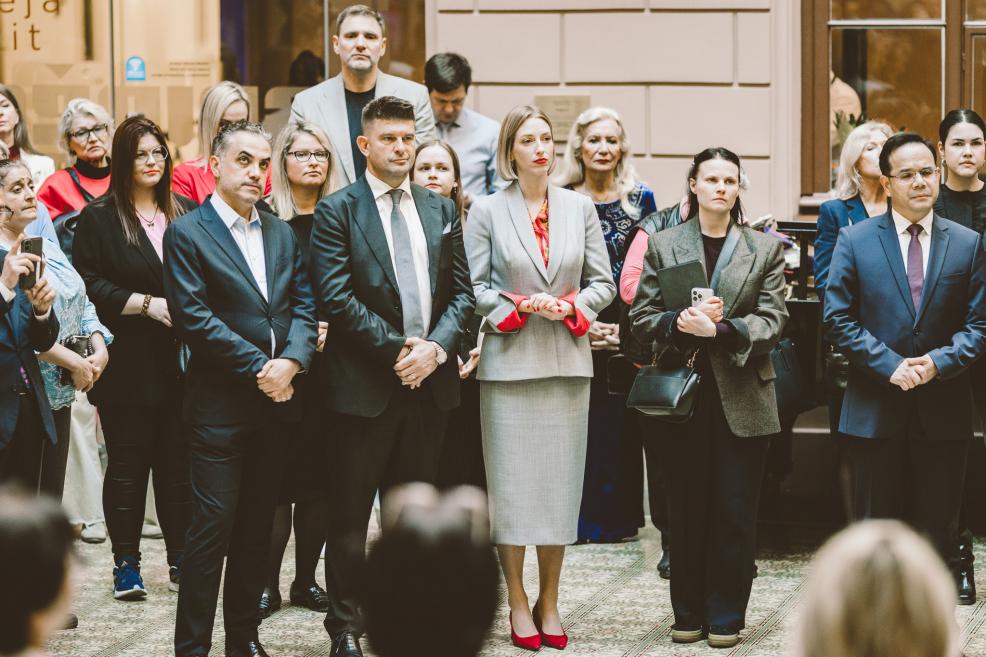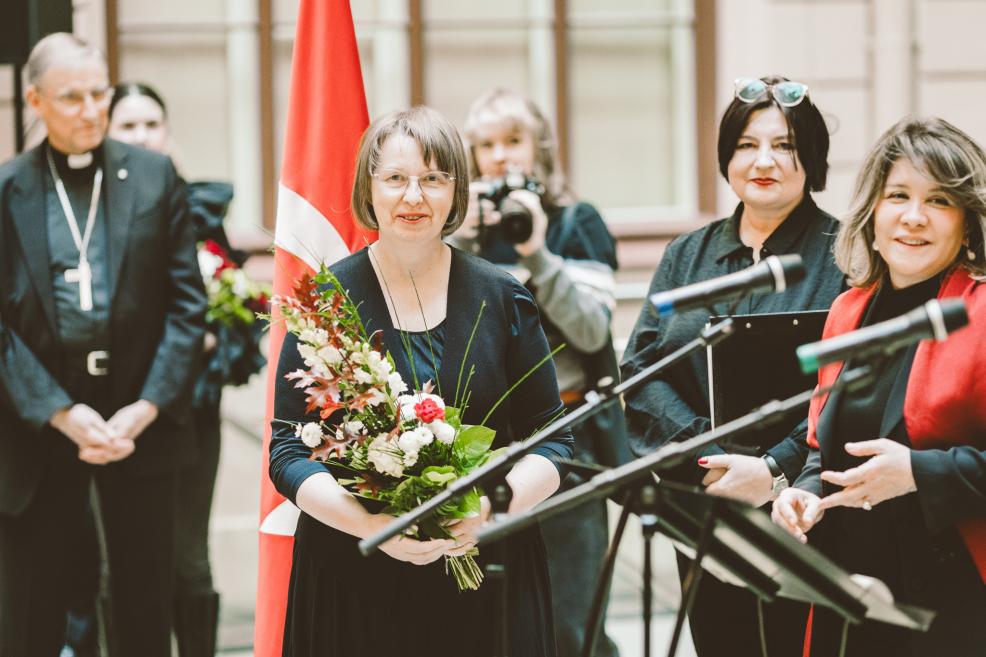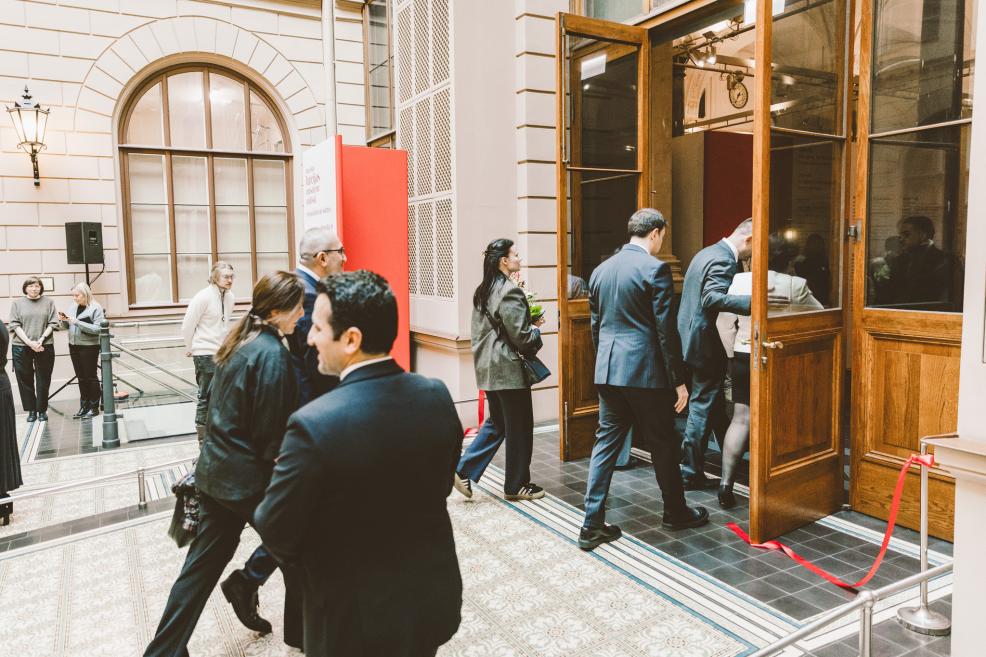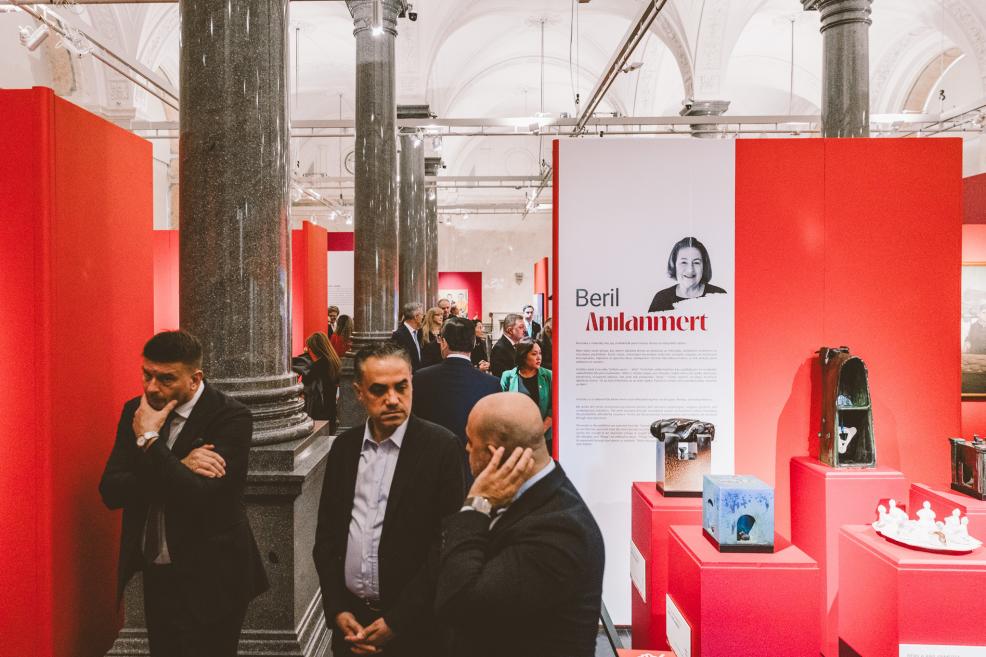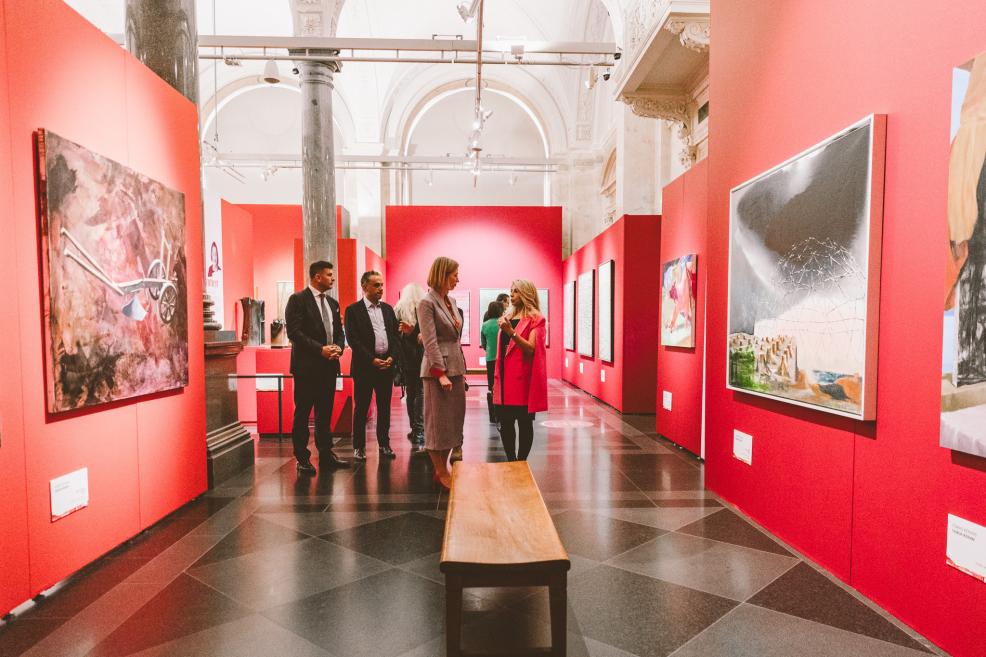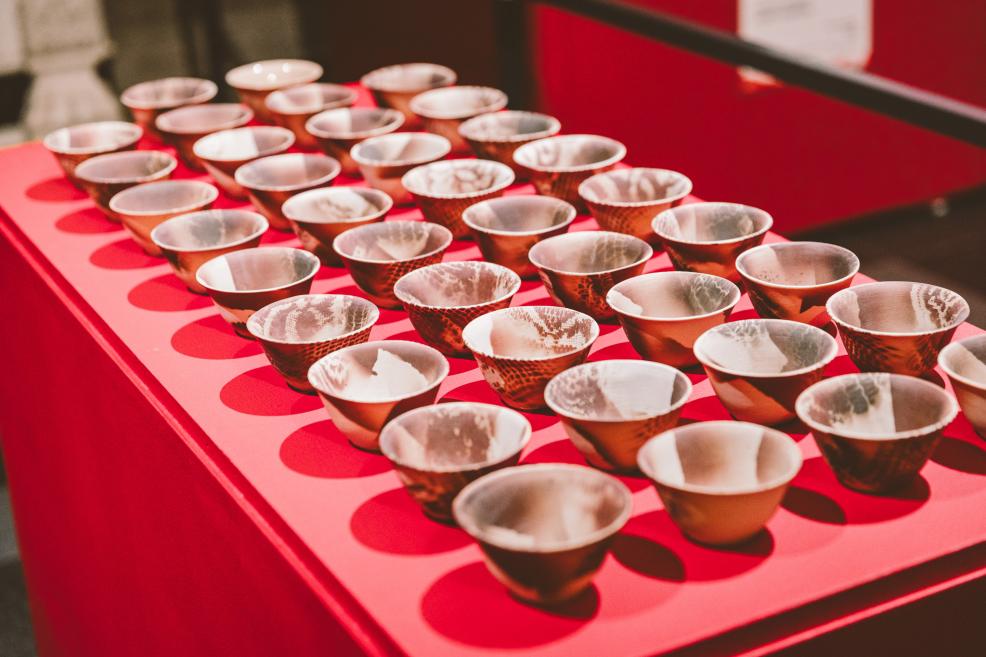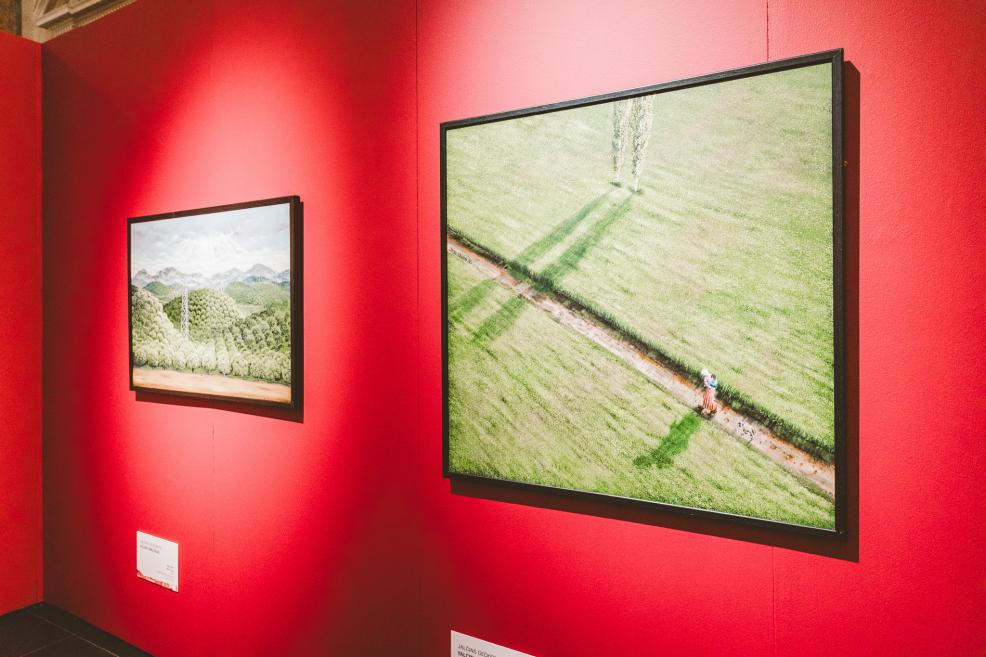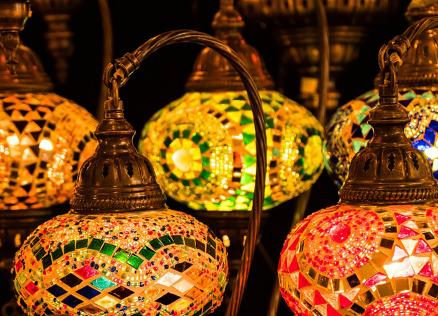Traces and Roots
The exhibition Traces and Roots. Anatolia in Contemporary Art of Turkey is taking place at the Art Museum RIGA BOURSE in Riga (Doma laukums 6) from 4 October 2025 to 18 January 2026.
Anatolia, the crossroads of Europe and Asia, has been a meeting point for different cultures since the dawn of civilization, where layer upon layer has formed the values of modern Turkey. The exhibition Traces and Roots, created in cooperation with the Embassy of the Republic of Türkiye in Latvia, brings together twelve prominent artists from Turkey whose works reveal the story of the encounter between Anatolia’s thousands of years of cultural heritage and contemporary art.
Inspired by the rich history and culture of their homeland both intellectually and visually, these artists combine traces of Anatolia’s past, traditional motifs and symbols with contemporary artistic language and unique forms of expression. The exhibition thus takes the viewer on an impressive journey from the past to the present.
About the exhibition artists
Aydin Ayan’s paintings combine history, mythology and social events. He uses Anatolian legends, folk tales and cultural motifs, interpreting them in detailed narratives that also incorporate symbolic elements characteristic of this ancient region. Ayan’s works contain both traces of the past and a critical view of today’s world.
Habip Aydoğdu’s paintings are saturated with powerful colour energy and dynamism. The intense use of red tones in his abstract compositions symbolizes the artist’s belonging and passion for his native Anatolia. It is a history of struggles and cultural clashes, the echoes of which can still be felt today.
Resul Aytemur mostly paints urban scenes – street markets, transport stops, squares, and parks. These are usually multi-figure compositions with a rich colour palette, conveying the atmosphere of the city: human relationships, joy, collective tension or a spirit of protest.
Beril Anilanmert creates dynamic, expressive ceramic sculptures and ceramic two-dimensional paintings. She incorporates metal, textiles and glass into traditional ceramic materials, highlighting the aesthetics of incompleteness. Artist’s contemporary works draw thematic inspiration from mythology and social life.
At first glance, Zehra Çobanli’s ceramic works often seem to be associated with intimate, typically feminine elements and activities – shoes, tea / coffee rituals, feeding poultry. But these everyday motifs form a narrative around themes such as status, migration and vulnerability. Çobanli combines the Anatolian ceramic heritage with conceptual art, reinterpreting historical motifs in a contemporary context.
Devrim Erbil (Selen Karaibrahim) combines abstraction and figurative elements in his painting. Urban landscapes occupy a particularly important place in author’s artistic narrative – rhythmically structured compositions, captured as if from a bird’s eye view, with motifs from Anatolian architecture and nature. Here, the linear aesthetics of traditional Turkish art, which resonates with the art of calligraphy, merges with a deliberately chosen monochrome or limited colour palette.
Yalçin Gökçebağ paints idyllic scenes of rural life of Anatolia, showing the mutual rhythms of man and nature, peaceful everyday life, where work alternates with rest. In his compositions, the perspective from above gives the depicted flow of life a timelessness and a slightly nostalgic atmosphere.
Fevzi Karakoç is drawn to mysticism, the human emotional world and symbolic images (birds, horses, trees), which he uses to explore existential themes. Anatolian nature, folklore, Eastern philosophy, and Turkish poetry are Karakoç’s sources of inspiration. With lush brushstrokes rhythmically painted figures interact with the expressive backgrounds, giving the artworks additional depth.
Alaybey Karoğlu often prefers simplified, abstract forms and factures in his works, reminiscent of moody landscapes, sometimes complemented by human figures from the past. His paintings are characterized by expressive colour fields and broad brushstrokes. Karoğlu combines symbolism and cultural motifs that are important to Anatolia with personal iconography, for example, using images such as Mavi Türkü (Blue Folk Song) to make the narrative multi-layered in terms of content.
Temür Köran is a contemporary Turkish painter known for his expressive visual language, which combines abstract and figurative elements with rich colours and dynamic compositions. Author’s works often reflect themes of memory, identity and the human emotional state.
Hasan Pekmezci vividly represents the tradition of figurative painting in Turkey, focusing on Turkish culture and human emotions. His works combine figurative and expressionist elements with a strong narrative and sense of identity. Inspired by both everyday life and folk art, Pekmezci reinterprets the visual heritage of Anatolia.
Şükran Pekmezci emphasizes the role of women in Anatolian culture. The depiction of ritualized events in everyday life creates a link between the past and the present, also recalling ancient craft skills: ceramics, weaving and miniature painting. Artist’s painting themes are rooted in the events of rural village life: weddings, folk festivals, the arrival of the first snow, and reflect the unmediated authenticity of Anatolian traditions.
